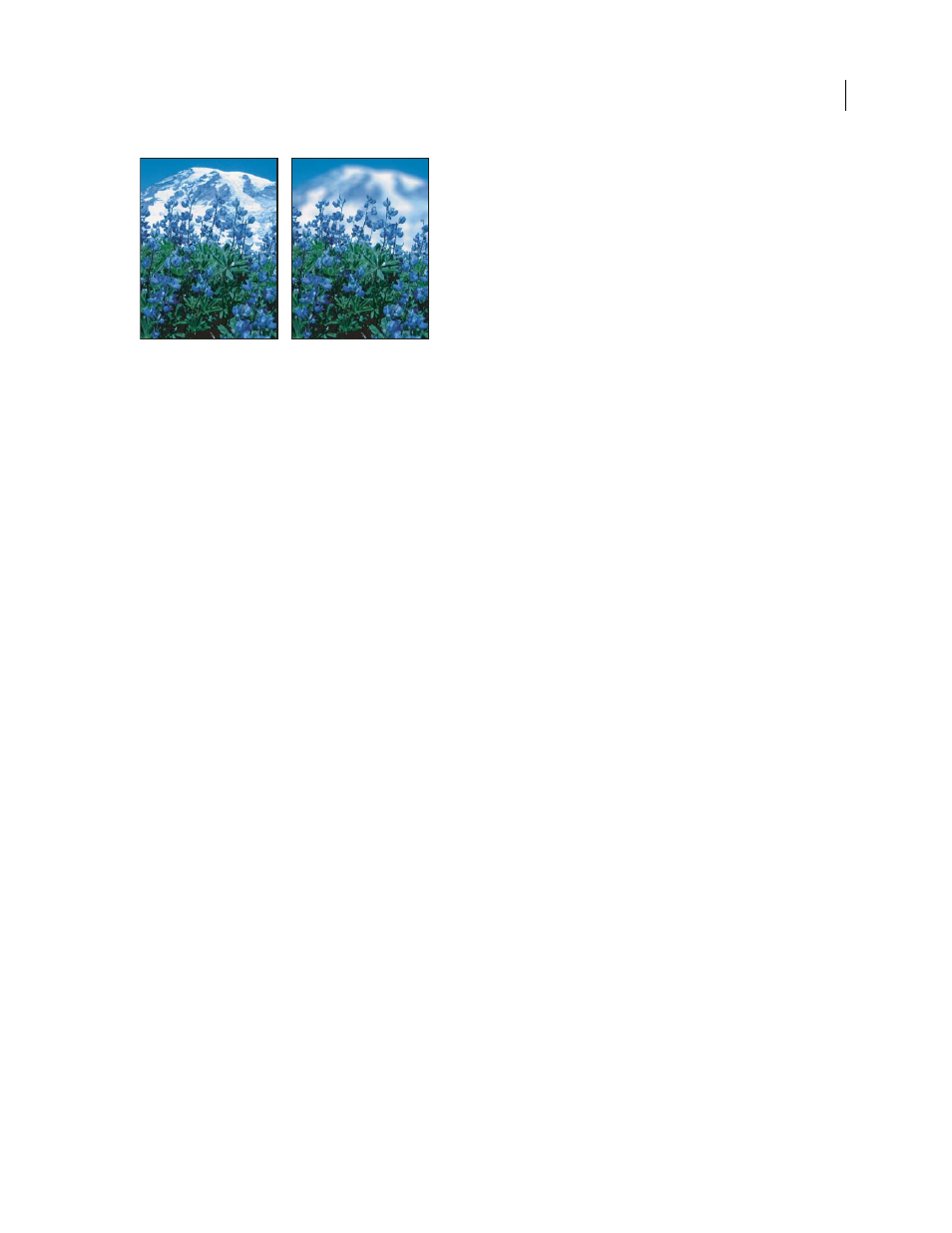Adobe Photoshop CS3 User Manual
Page 396

PHOTOSHOP CS3
User Guide
389
Before (left) and after (right) using the Lens Blur filter; the background is blurred but foreground stays sharp
Note: To apply a Blur filter to the edges of a layer, deselect the Lock Transparent Pixel option in the Layers palette.
Average
Finds the average color of an image or selection, and then fills the image or selection with the color to create
a smooth look. For example, if you select an area of grass, the filter changes the area into a homogeneous patch of
green.
Blur and Blur More
Eliminate noise where significant color transitions occur in an image. Blur filters smooth transi-
tions by averaging the pixels next to the hard edges of defined lines and shaded areas. The effect of the Blur More
filter is three or four times stronger than that of the Blur filter.
Box Blur
Blurs an image based on the average color value of neighboring pixels. This filter is useful for creating
special effects. You can adjust the size of the area used to calculate the average value for a given pixel; a larger radius
results in greater blurring.
Gaussian Blur
Quickly blurs a selection by an adjustable amount. Gaussian refers to the bell-shaped curve that is
generated when Photoshop applies a weighted average to the pixels. The Gaussian Blur filter adds low-frequency
detail and can produce a hazy effect.
Lens Blur
Adds blur to an image to give the effect of a narrower depth of field so that some objects in the image stay
in focus and others areas are blurred. See “Add lens blur” on page 212.
Motion Blur
Blurs in the specified direction (from –360º to +360º) and at a specified intensity (from 1 to 999). The
filter’s effect is analogous to taking a picture of a moving object with a fixed exposure time.
Radial Blur
Simulates the blur of a zooming or rotating camera to produce a soft blur. Choose Spin to blur along
concentric circular lines, and then specify a degree of rotation. Choose Zoom to blur along radial lines, as if zooming
into or out of the image, and specify a value from 1 to 100. Blur quality ranges from Draft (for fast but grainy results)
or Good and Best for smoother results, which are indistinguishable from each other except on a large selection.
Specify the origin of the blur by dragging the pattern in the Blur Center box.
Shape Blur
Uses the specified kernel to create the blur. Choose a kernel from the list of custom shape presets, and
use the radius slider to adjust its size. You can load different shape libraries by clicking the triangle and choosing from
the list. Radius determines the size of the kernel; the larger the kernel, the greater the blur.
Smart Blur
Blurs an image with precision. You can specify a radius, a threshold, and a blur quality. The Radius value
determines the size of the area searched for dissimilar pixels. The Threshold value determines how dissimilar the
pixels must be before they are affected. You also can set a mode for the entire selection (Normal) or for the edges of
color transitions (Edge Only and Overlay). Where significant contrast occurs, Edge Only applies black-and-white
edges, and Overlay Edge applies white.
Surface Blur
Blurs an image while preserving edges. This filter is useful for creating special effects and for removing
noise or graininess. The Radius option specifies the size of the area sampled for the blur. The Threshold option
